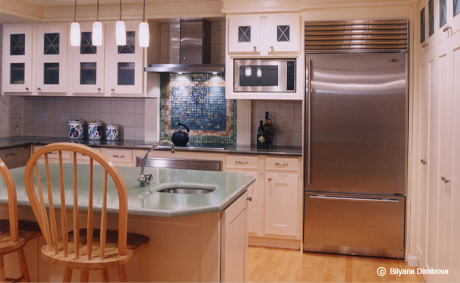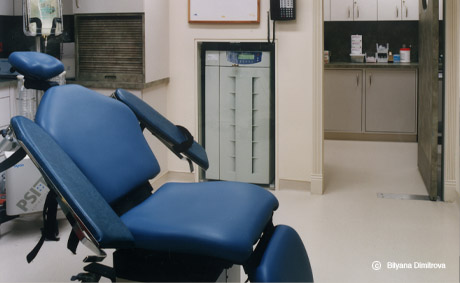Posts Tagged kitchen design
The Surprising Design Connection between Kitchens and Labs
Posted by patgericke in commercial, inspiration, residential on March 25, 2012
Work – especially in New York – takes up plenty of attention in life. Some people believe that your design style from home can’t interfere with your design in the office, and vice versa. But that’s not the case, as many of my clients find out. Sometimes, design decisions naturally cross over from work to home.
Let’s take the example of medical offices. A laboratory is shockingly similar to a kitchen, when it comes to design.
The kitchen is known as “the hearth of the home”. No one wants to leave the kitchen during the festivities. But for all that socializing, there are critical design considerations that can make all the difference between safely enjoyable and carelessly dangerous. The same can be said for a laboratory, whether for research, medical testing or patient exams. A few small changes to layout, lighting and materials can keep the day running smoothly and safely.
When laying out a kitchen, it’s generally best to work within the favored triangle configuration for the sink, stovetop and refrigerator. This creates an open, non-congested traffic pattern, and it cuts down on steps to avoid repetition and wasted effort when preparing and cleaning up meals. The same holds true in a medical situation, with a distinct layout of the sink, prep area and storage space. On top of the kitchen layout, though, a lab layout needs a clean/dirty space distinction to avoid cross-contamination with sterile and non-sterile instruments.
In both a kitchen and a laboratory, design choices need to be made with sanitation and cleanup in mind. Good lighting is also crucial in both places, to avoid mistakes. For both a kitchen and a laboratory, you’ll need to avoid seams in floors to prevent dirt and bacteria from collecting. There should be enough spring in the flooring material to avoid back fatigue and to offer some resilience if a wine glass (or a Petri dish) drops.
When designing medical exam or procedure rooms, I lean toward either CaesarStone or another non-porous material such as lavastone. Lavastone was developed in France for use in laboratories to avoid contamination when working with bodily fluids. Use a similar stone in the kitchen, and you can work with raw chicken without as much fear of contamination. One point to note: because natural stones are porous, they require sealing periodically.
For sinks, I recommend cast iron with a non-porous glaze. It can chip, but it scrubs up nicely. Stainless steel is a comparable option that’s less sensitive to chipping. Both do require polishing, but they have a clean, beautiful appearance in the kitchen.
Whatever your design needs, be strategic – and don’t worry about letting your style from home influence your style from work (or the other way around). If you need advice, feel free to email me or call me at (212) 532-2569 to set up a consultation.

